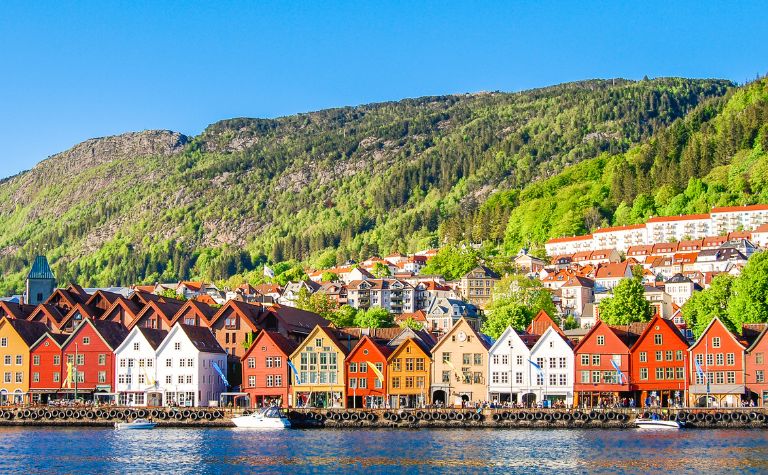When invited to someone’s home, it may be expected for the invitee to join the host for a meal depending on the time of day.
In many cultures, providing guests with a warm meal is expected and a source of pride. But this doesn’t extend to all cultures, as was recently brought up in a post that became known as #SwedenGate.
Scandinavians don’t feed their guests because dining is typically a private affair. Some hosts may even eat without their guests joining the meal.
In addition, providing another person’s child with a meal could be seen as an insult to the child’s family, and Scandinavians prefer to avoid arguments.
This article will cover why the cultural expectation in some Scandinavian countries doesn’t involve feeding guests and how that in no way diminishes the warm hospitality visitors will find.
It will also address the idea of ‘fika’ – an important daily break for people to eat, drink, and socialize.
Also, see Why Do Scandinavians Have Dark Hair? to learn more.

Nordic Hospitality: Why Scandinavians Find It Weird To Feed Guests
There are two main reasons people in Sweden and other Nordic countries might find the idea of feeding their guests food an odd thing to do.
The first connects to the fact that Swedish people – and Scandivains overall – are generally more private than other societies. This means that eating with non-family members is not common. [1]
The second reason might appear at odds with a society known for its welfare programs, but Scandivanains prefer to contribute equally to the community and be independent. [2]
People don’t want to feel like they owe someone if it can be helped, and they certainly don’t want to be a burden to or disrespect each other.
In the example that started #SwedenGate, a person recounted when they had come over to play with a friend and was asked to wait in their friend’s room while the family ate dinner.
In Sweden, feeding someone else’s child could be seen as an indirect insult to that child’s family by implying that said family cannot provide enough food for the kid. [3]
Visiting children may be more likely to be asked to either wait while the hosts eat or asked to return home at mealtime than adults.
Not only is this to avoid an accidental insult, but because children and adults were historically seen as different categories and therefore treated differently.
Nowadays, the host may ask the visiting child’s parents for permission to invite the kid to join them at mealtime.
Also, see Why Are Scandinavian Flags Similar? to learn more.
What About Other Scandinavian Countries?
While most of the discussion around this topic involves Sweden, Scandinavia is not just that single country.
Norway and Denmark are traditionally grouped beside Sweden as ‘Scandinavia,’ but some sources will add Denmark, Finland, Iceland, and the Faroe Islands.
So should visitors to those other countries not expect to be invited for dinner?
The practice of not serving guests food, or eating without them, can be found in various parts of Northern Europe, including Finland and the Netherlands.
However, it can vary greatly depending on the location and the hosts. It might be best to assume that visitors won’t be fed in any Scandinavian country unless stated otherwise.

How Do Swedes Treat Guests?
In the Scandinavian countries, including Sweden, hosts treat guests well because providing good hospitality is important.
Invitations to dinner gatherings may be uncommon, and declining is acceptable.
Visitors should still ensure that they are gratuitous and attempt to follow common courtesy.
Also, see Why Do Scandinavians Have Blue Eyes? to learn more.
How Should Guests Act?
If a traveler is invited to someone’s house, whether for a meal or not, it is essential to respect the host’s privacy. Some central aspects of polite visitor behavior include:
- Introductions if there are people that the visitor doesn’t know
- Shaking hands with everyone in the room
- Bringing a present to thank the host for the invitation
Finally, always remember to ensure the host knows that their hospitality efforts are greatly appreciated. [4]
Is Not Feeding Guests Still Common in Modern Sweden?
As the post that started #SwedenGate was made by someone recounting a childhood experience, some may wonder how common eating without inviting guests to join still is in Sweden.
Overall, it seems that some – though not all – Scandinavians are leaving the practice behind as the historical reasons for not sharing meals with guests don’t apply to modern times. [5]
Also, see Are Scandinavians Nice? to learn more.

Fika
While travelers may not be invited for dinner, being asked to join someone for ‘fika’ is much more common.
‘Fika’ is a daily break for coffee and cake (or another sweet treat) and is so ingrained in Swedish culture that it is expected for employees to give their working time for it.
But ‘fika’ is more than a snack break; it’s a chance to socialize and chat with friends.
Beginning in the 18th century with the introduction of coffee, ‘fika’ – created from the Swedish word for ‘coffee’ – has become a staple of Swedish culture.
The addition of ‘and cake’ came in the 19th century. [6]
Of course, what is eaten for ‘fika’ is much less important than the act itself.
The Benefits of ‘Fika’
Joining someone for ‘fika’ does not just have the benefits of socialization. Taking breaks from work can improve things for both the employee and the employer. Research has shown that people, when allowed to take breaks from work, are:
- More productive
- Have better mental health
- Have lower stress levels
Swedes returning from ‘fika’ are also more focused and less likely to feel burned out from their job. [7] This aspect of Swedish culture is another part of their healthy lifestyles.
Swedish Foods
Whether someone is eating at a host’s home or enjoying ‘fika’ with a friend, they are sure to find a rich selection of Swedish treats and foods to enjoy.
Aside from the multiple types of sweets to go with ‘fika,’ pickled herring and crispbread are popular dishes. Sandwiches are another option, though served on a single slice of bread as opposed to the Western definition.
Travelers will also find the native lingonberry fruit widespread, especially as a jam. [8]
Also, see What Do Scandinavians Find Attractive? to learn more.
References:
[1] Source
[2] Source
[3] Source
[4] Source
[5] Source
[6] Source
[7] Source
[8] Source
